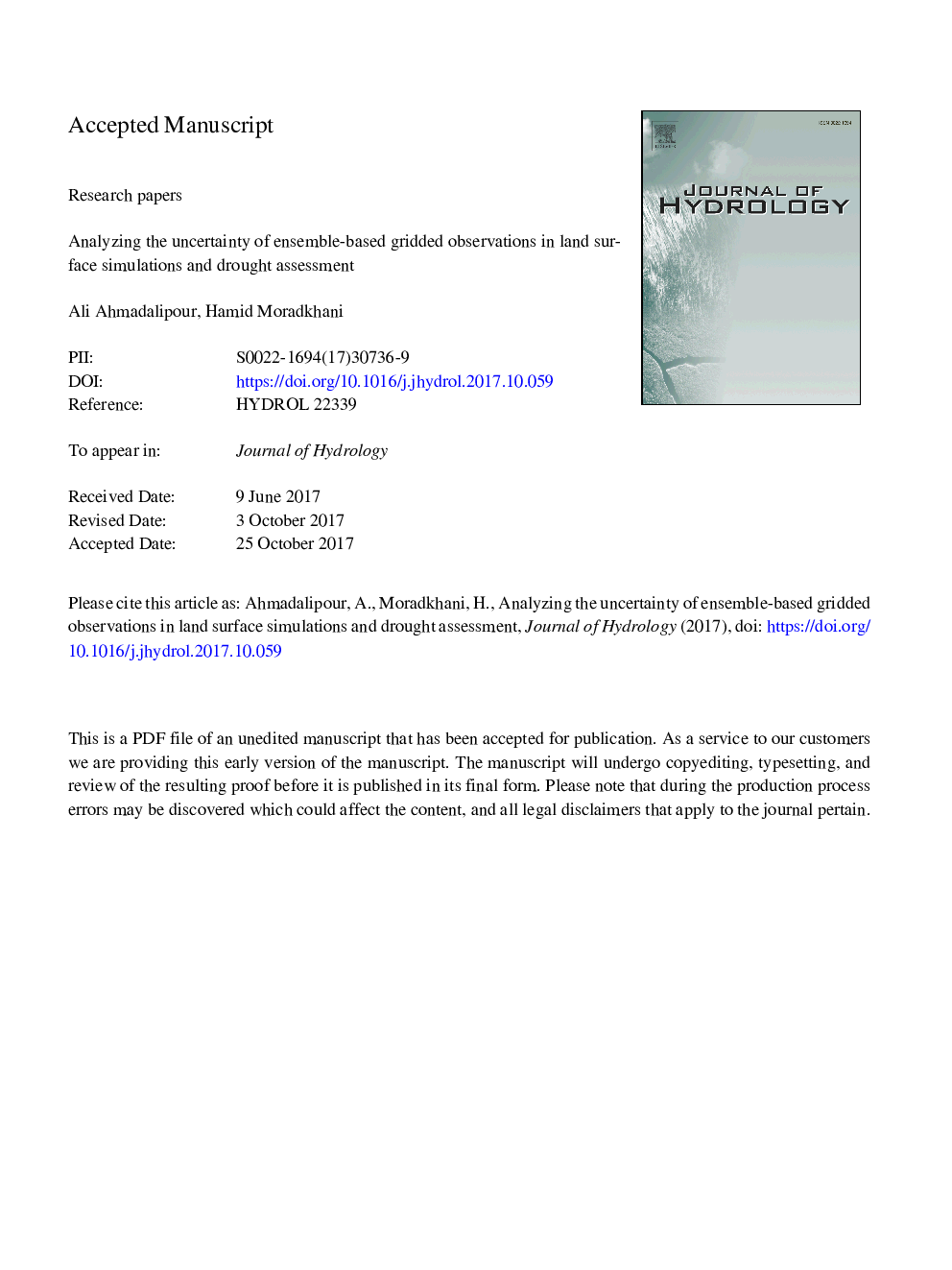| Article ID | Journal | Published Year | Pages | File Type |
|---|---|---|---|---|
| 8895277 | Journal of Hydrology | 2017 | 46 Pages |
Abstract
Hydrologic modeling is one of the primary tools utilized for drought monitoring and drought early warning systems. Several sources of uncertainty in hydrologic modeling have been addressed in the literature. However, few studies have assessed the uncertainty of gridded observation datasets from a drought monitoring perspective. This study provides a hydrologic modeling oriented analysis of the gridded observation data uncertainties over the Pacific Northwest (PNW) and its implications on drought assessment. We utilized a recently developed 100-member ensemble-based observed forcing data to simulate hydrologic fluxes at 1/8° spatial resolution using Variable Infiltration Capacity (VIC) model, and compared the results with a deterministic observation. Meteorological and hydrological droughts are studied at multiple timescales over the basin, and seasonal long-term trends and variations of drought extent is investigated for each case. Results reveal large uncertainty of observed datasets at monthly timescale, with systematic differences for temperature records, mainly due to different lapse rates. The uncertainty eventuates in large disparities of drought characteristics. In general, an increasing trend is found for winter drought extent across the PNW. Furthermore, a â¼3% decrease per decade is detected for snow water equivalent (SWE) over the PNW, with the region being more susceptible to SWE variations of the northern Rockies than the western Cascades. The agricultural areas of southern Idaho demonstrate decreasing trend of natural soil moisture as a result of precipitation decline, which implies higher appeal for anthropogenic water storage and irrigation systems.
Related Topics
Physical Sciences and Engineering
Earth and Planetary Sciences
Earth-Surface Processes
Authors
Ali Ahmadalipour, Hamid Moradkhani,
